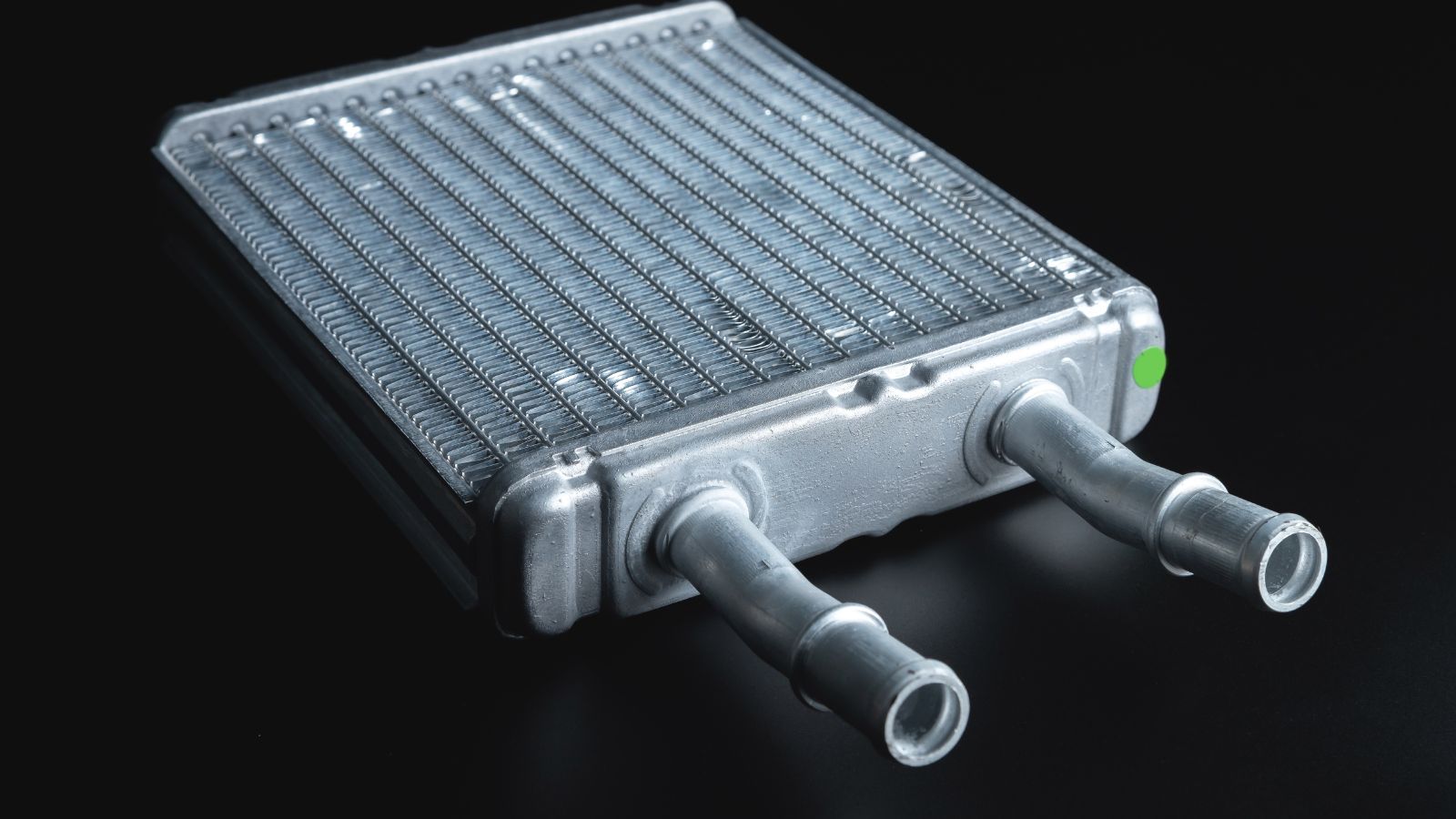A clogged heater core often creates a significant problem in the automobile ignition system. It prevents the steaming and makes the ignition come to a halt. So, when you want to unclog the heater core, you have to learn how to tell inlet and outlet on heater core.
Thankfully, there are three ways to fix this problem. To determine which will be which, you have to observe very carefully. The warmer hose that runs water directly to the radiator is undoubtedly the outlet hose. And an inlet hose will indeed be attached with a heater control valve. It regulates measures of coolant steaming into the heater core.
The strategy we’ve conferred above is not the only solution. We’ll discuss a few more ways to tell the inlet and outlet on the heater core along with the whole process of unclogging the heater core.
Table of contents
What Is A Heater Core
A heater core is a kind of device that heats the cabin of a vehicle. It’s almost like a smaller radiator that works along with the cooling system of an automobile.
However, heater cores do exactly the opposite of what a radiator does. It removes heat from the hot coolant and spreads it into the atmosphere.
The heater core also vanishes the warmth from the hot coolant through the air vents and pumps it with a blower motor into the car cabin.
How to Tell Inlet And Outlet On Heater Core
To figure out how to tell inlet and outlet on heater core, you must follow three steps.
Step 1: When the engine is hot, turn the heat up as far as possible. The hose that comes from the water pump is the outlet hose. It’ll certainly be warmer. The outlet hose sends coolant back to the engine cooling systems after it flows through the heater core.
Step 2: Another most helpful technique is to follow the rubber hoses. You’ll see a hose attached to a metal pipe placed within a short distance to the water pipe. And the tube is called the intel of the heater core.
Another rubber hose you’ll notice is connected to a metal pipe. It will reach horizontally to the front side of the engine. That hose goes to the inlet side of the pump. Through which it returns to the engine is the outlet from the heater core.
Step- 3: The intel hose will undoubtedly have a heater control valve. It regulates the coolant steaming into the heater core.
An outlet hose typically runs to the radiator. After flowing through the heater core, it returns the coolant.
How to Figure Out If a Heater Core is Clogged
The heater core transfers heat from the coolant. It’s a part of a car cooling system. Through the little tube, it usually circulates coolant and radiates heat into the cabin.
A clogged heater core can’t produce heat. It’s the first sign you’ll notice. The blowing motor will be on, but you’ll feel cold air.
Here, we’ll address a few more symptoms of a clogged heater core.
- Frigid coolant can be one of the main reasons the heater core isn’t working. If it’s the issue, the inside of the vehicle won’t be warm. Once you notice low coolant in the radiator, overflow the tank before starting the car.
- If you smell antifreeze or moisture on the passenger side, it indicates the heater core is leaking. At this moment, you’ll feel a greasy mist inside the windshield. Seeing any of this happens, replace the heater core immediately.
- The most common sign of a clogged heater core is the heat doesn’t work when you turn it on. There won’t be any heated air even after the blower fan is functioning.
- Smelling fruity odor is another sign of a clogged heater core. Coolant usually smells sweet. So, when you sniff a persistent sweet smell inside the car, that means there’s a leak in the heater core, or it’s clogged.
How to Unclog A Heater Core
To unclog a heater core, you need to have the correct information and the right tools. Once you have access to accurate knowledge and appliances, you can fix them like a technician.
Here are a few steps to unclog the heater core.
- Step 1
First, determine the inlet and the outlet of the heater core. It can usually be accessible at the firewall. If you face trouble gaining access to these, trace the hoses and ensure they are not attached to the engine.
- Step 2
Take a close look at the hose clamps and determine which one to remove. You may have to use Philips-head and flat-head screwdrivers or pliers. Ease the hose clamps with a flat-head screwdriver and twist the hose to loosen it. Then pull it out.
- Step 3
If the hose was detached from the firewall, get an extra length of the heater hose. Then attach it to the inlet or the outlet. On the other hand, if you notice that the hose was disconnected from another point, use that junction of the original hose.
Get a garden hose with a built-in sprayer. Against the end of the heater hose, insert the sprayers’ tip. Then turn the garden hose on to rinse the heater hose.
After a few flushes, turn to the other outlet and wash it. Continue doing this until the water looks clean.
- Step 4
Remove the air pockets. Collect a 50\50 mixture of coolant and water. Lift the one hose and pour the mixture into it. The fluid should exit the lower hose. Immediately reattach the lower hose and the other hoses.
- Step 5
Now, you’ve come to the end process.
Check the heater core whether it’s working. Pour some coolant and the mixture into the radiator. To make sure it doesn’t overheat, take a look at the temperature gauge. At last, check if the heat is coming from the heater core.
Frequently asked questions
Which hose is the heater inlet?
Answer: The hose that goes to the heater water pump area is the heater inlet. These flush kits will work on either one, though, as they go through the cooling system as a whole. The other hose in your heating system is the outlet.
What happens if you reverse the heater core hoses?
Answer: If you reverse the hoses, the coolant will flow oppositely through the core. But it’ll still be floating in the same order as far as the engine is involved. Though, it may not stop from carrying debris from the core into the engine cooling system.
How do I get the air out of my heater core?
Answer: Gently pull out the cap of the radiator. Make sure it doesn’t bubble up. Start the engine and let it heat up for a while. After gaining the proper temperature, the heater valve will automatically let the coolant gush into the heater core. And it will drag all the air bubbles out.
How long can you drive with a rotten heater core?
Answer: You can drive on with the situation, though. But you should not, for a long time. The heater core uses the engine’s coolant. So, if a heater core has a defect, it affects the cooling system by raising the temperature. Continuing to drive the vehicle in such a condition, not curing the issue, can cause further engine damage.
Conclusion
Having a sound heating system warms the interior of your vehicle. Once it stops working, it becomes our headache. To unclog the heater core knowing how to tell inlet and outlet on heater core is mandatory.
Here, we’ve discussed almost everything relevant to the topic. If you follow each step carefully, you won’t have to face trouble determining the inlet and outlet again.
But a piece of advice is that when you aren’t confident enough about fixing, it’s time you should see a technician for your vehicle.
Good luck.

Thomas is a retired motor mechanic, father, and grandfather. He writes from his 20+ years in the automotive industry to help you find and solve anything related to car repairs, maintenance, and care.
